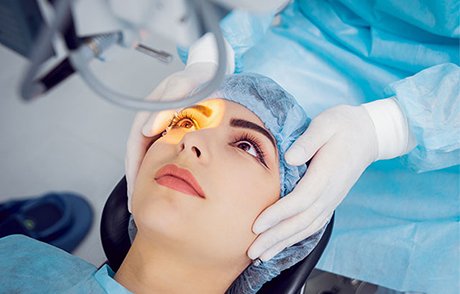

Dr. Edwin Schottenstein has made it a personal goal to provide the best, most comprehensive eye care of any eye doctor in New York City. Dr. Schottenstein is a board-certified ophthalmologist with more than 30 years of experience in eye care and specializes in vision preservation and restoration, including surgery. Other services provided include comprehensive eye exams, dry eye procedures, yag capsulotomy, and limbal relaxing incisions. One of our most commonly performed surgeries is cataract surgery.
A cataract is a clouding of the lens in the eye, which can cause one’s vision to become blurry. The most common type of cataract results from the aging process, but there are other types of cataracts that are not related to aging. Cataracts can occur in one or both eyes. Unlike what many people believe, it is not a film or tumor over the eye.
Only an eye care professional can determine if you have a cataract. Dr. Schottenstein utilizes state-of-the-art technology to perform a complete examination of your eyes to achieve a proper diagnosis.
Traditionally, the only type of IOL available was a monofocal lens, which offered only one power to correct vision (nearsightedness or farsightedness), thus requiring cataract patients to still depend on glasses/contact lenses to correct the other power.
With the advancements in today’s technology, we are now able to provide multifocal IOLs, which offer a full range of corrected vision for near vision, distant vision and in-between. There are different types of multifocal IOLs that are each optimized for a somewhat different vision zone. We will help determine which type of multifocal lens will be the best match for your needs.
Learn more about the types of IOLs we provide on our Life Style Lens page.
One of the latest advancements in cataract surgery is the ability to remove the cataract and then implant an IOL through a microscopic incision, which has virtually eliminated the need for stitches. There are instances when stitches are necessary, but it’s based on the type of procedure needed to ensure optimal vision.
Standard cataract surgery that uses a monofocal IOL is usually covered by most insurance plans and Medicare. Multifocal IOLs are not covered by Medicare or insurance plans, however, the cost of having the cataract removed will be covered.
As long as there are no other eye diseases present like a retinal disease, more than 90 percent of cataract patients achieve vision better than 20/30 following surgery. Reading glasses will be necessary after surgery if a monofocal IOL is used. The dependency on glasses or contact lenses for patients with multifocal IOLs is greatly reduced.